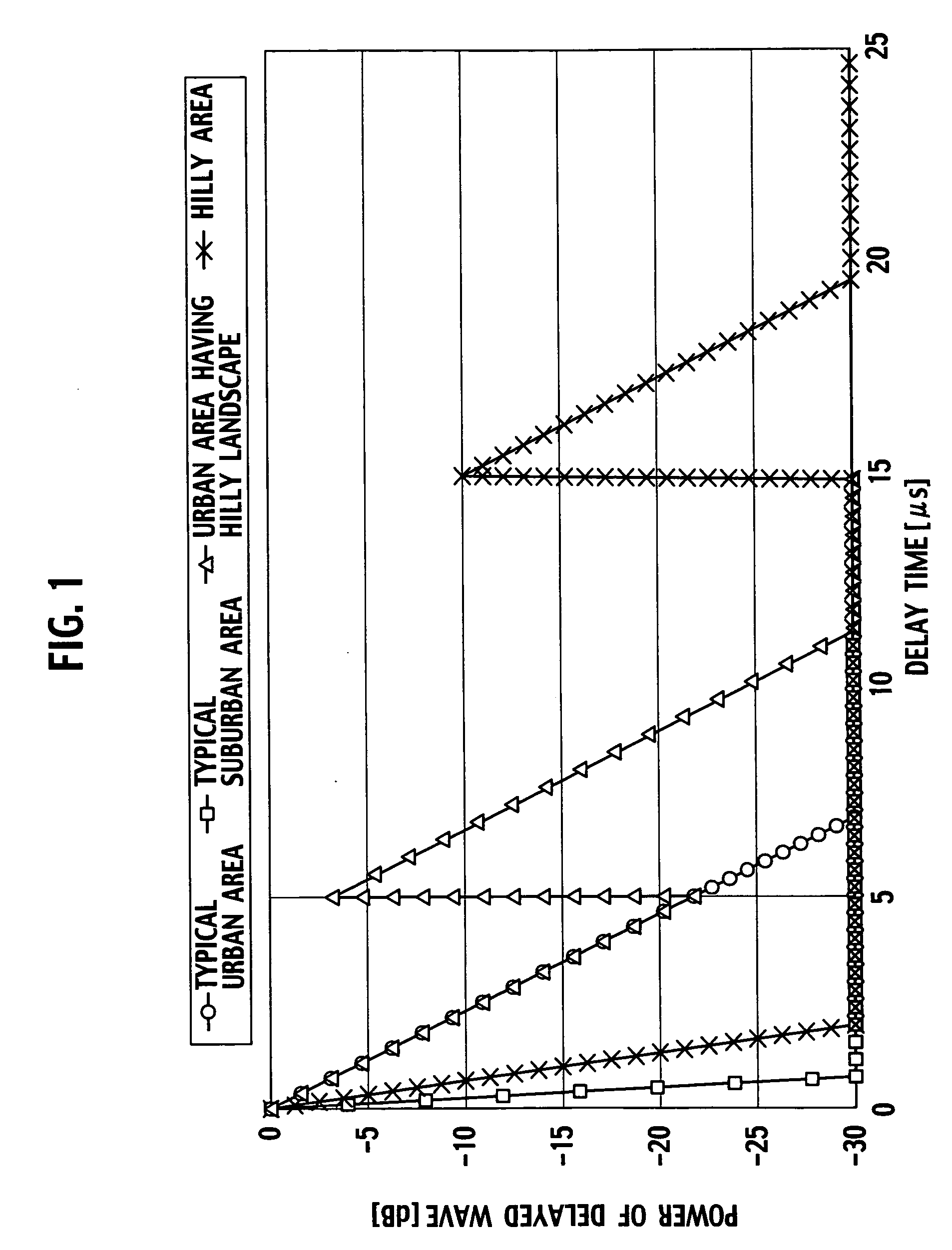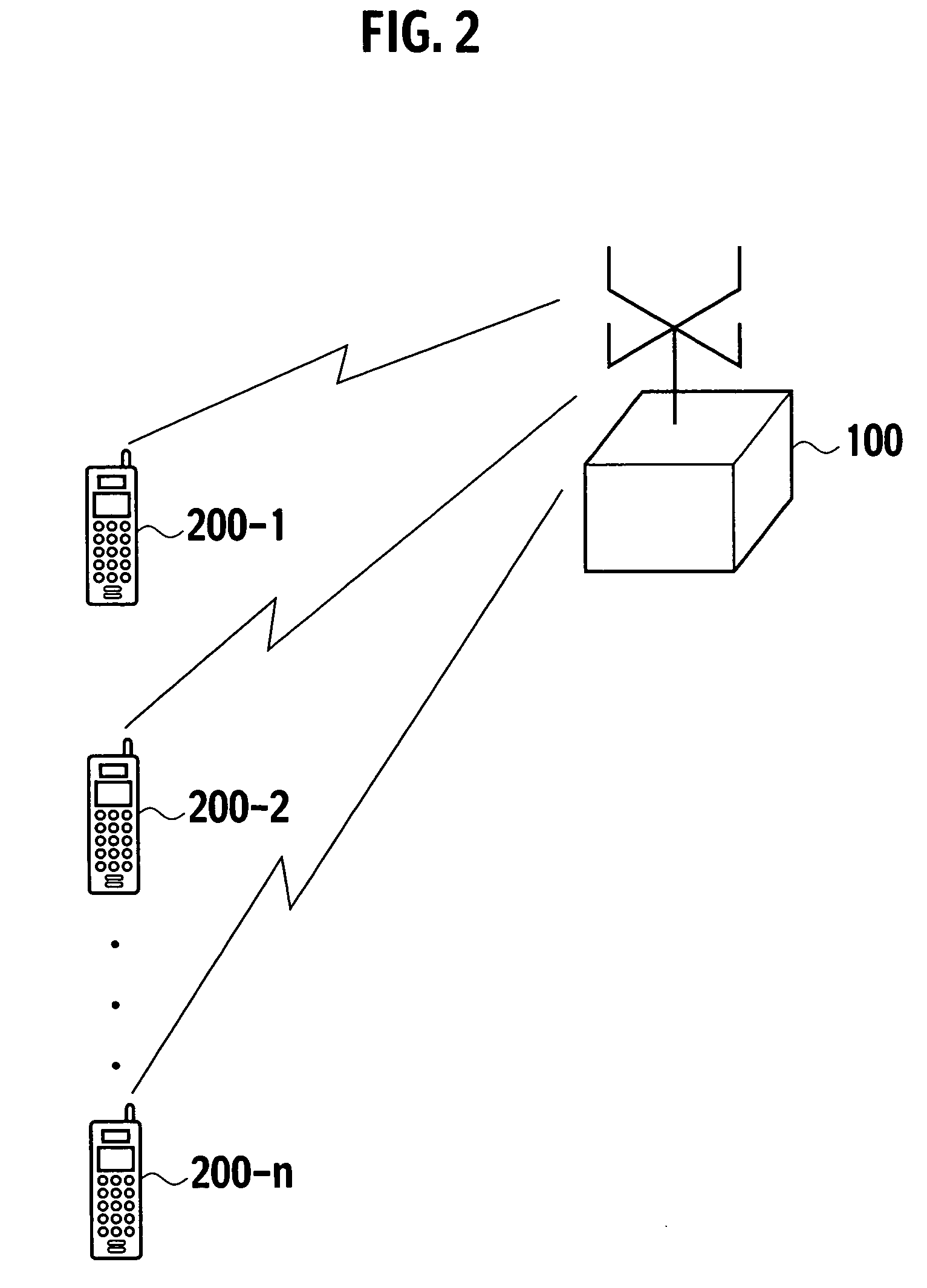Radio communications device and radio communications controlling method
- Summary
- Abstract
- Description
- Claims
- Application Information
AI Technical Summary
Benefits of technology
Problems solved by technology
Method used
Image
Examples
first modified example
[0069] In the above-described embodiment, the first mode processor 130, the second mode processor 150, or the third mode processor 170 allocates subchannels formed of the plurality of subcarriers to a single communication counterpart device (such as the terminal device 200-1) (see FIG. 4).
[0070] In this modified example, the first mode processor 130, the second mode processor 150, or the third mode processor 170 is configured to allocate subchannels respectively to different communication counterpart devices for each of the time slots obtained by dividing a frame to be repeated at a predetermined unit cycle (such as 2.5 ms) (see FIGS. 4A to 4C and FIG. 7A to 7C).
[0071] For example, as shown in FIG. 4A and FIG. 7A, the first mode is applied to two subcarriers in a predetermined frequency band. The subchannels each composed of the single subcarrier are allocated to the terminal devices 200-1 and 200-2, respectively.
[0072] As shown in FIG. 4B and FIG. 7B, the second mode is applied ...
second modified example
[0075] The mode selector 117 may select any mode on the time slot basis. Further, the mode selector 117 may select any mode (the mode in accordance with the number of subchannels) on the time slot basis in a case where a plurality of subchannels is allocated to a single communication counterpart device.
[0076] For example, in a case where two subchannels are respectively allocated to the terminal devices 200-1 and 200-2 in a certain time slot as shown in FIG. 8, the radio base station 100 selects the first mode while targeting the two subchannels.
[0077] In this way, the radio base station 100 can apply the GI length and the subcarrier interval properly for each of the time slots. Accordingly, the radio base station 100 can ensure both the delayed wave resistance and the fading resistance in good balance for each of the time slots.
third modified example
[0078] In a case where a plurality of subchannels are allocated to a single communication counterpart device, the mode selector 117 may change the subcarrier interval in accordance with the selected mode with a wider subcarrier interval than the subcarrier interval.
[0079] The following explanation will be based on the assumption that the second mode is selected. However, the present invention is not limited only to this selection and it is by all means possible to select the first mode or the third mode instead.
[0080]FIG. 9A shows contents of the transmission symbol in accordance with the second mode. FIG. 9B shows contents of the transmission symbol in accordance with a second mode-expand, which is derived from the original second mode.
[0081] For example, in a case where the plurality of subchannels are allocated to the single terminal device, the mode selector 117 selects the second mode-expand having the wider subcarrier interval (such as 96 kHz as shown in FIG. 9A) than the s...
PUM
 Login to View More
Login to View More Abstract
Description
Claims
Application Information
 Login to View More
Login to View More - R&D
- Intellectual Property
- Life Sciences
- Materials
- Tech Scout
- Unparalleled Data Quality
- Higher Quality Content
- 60% Fewer Hallucinations
Browse by: Latest US Patents, China's latest patents, Technical Efficacy Thesaurus, Application Domain, Technology Topic, Popular Technical Reports.
© 2025 PatSnap. All rights reserved.Legal|Privacy policy|Modern Slavery Act Transparency Statement|Sitemap|About US| Contact US: help@patsnap.com



